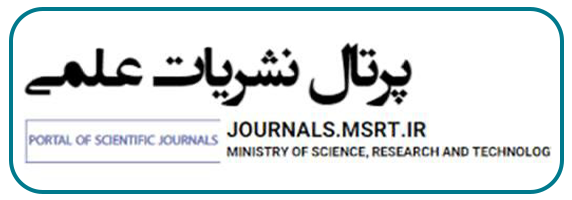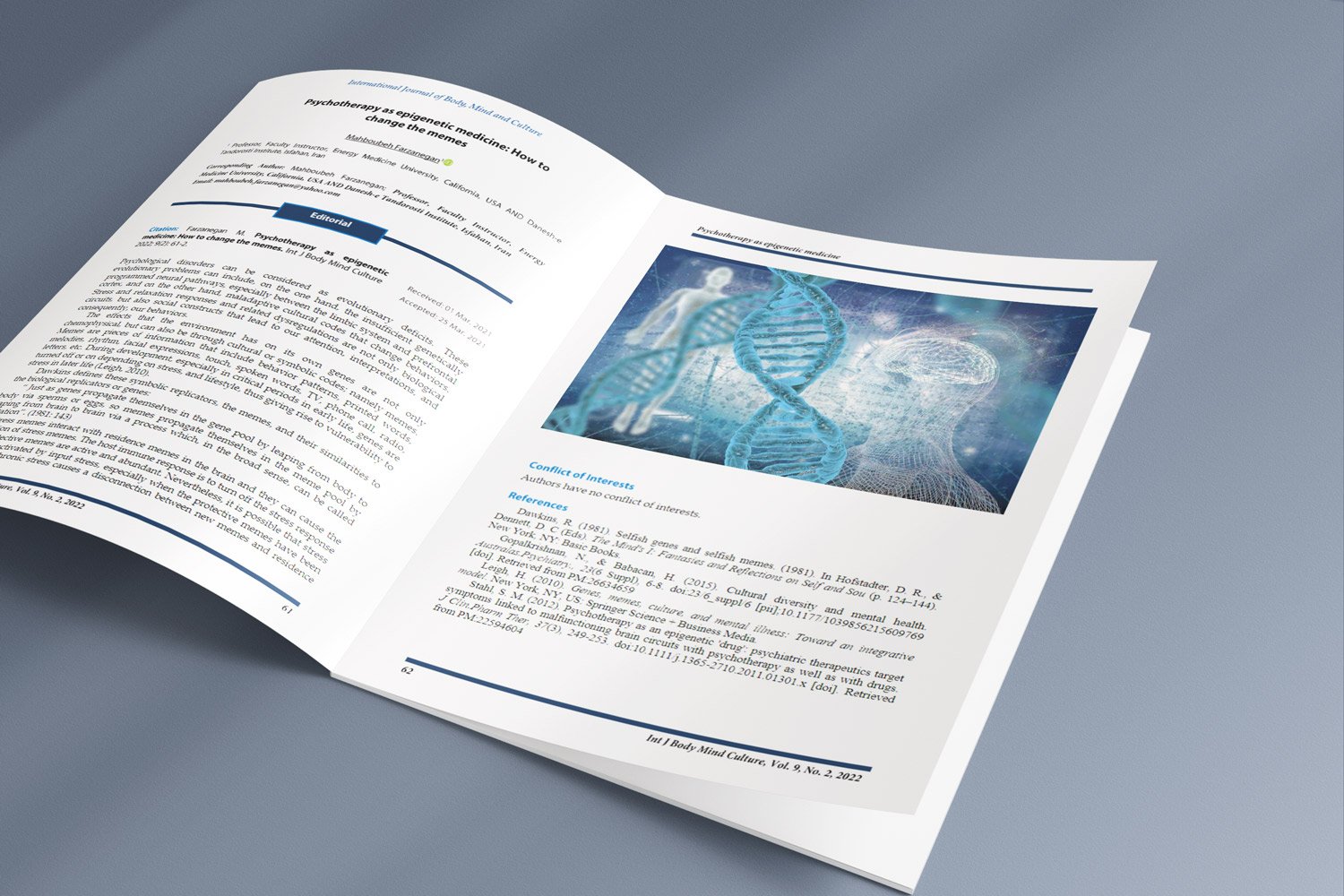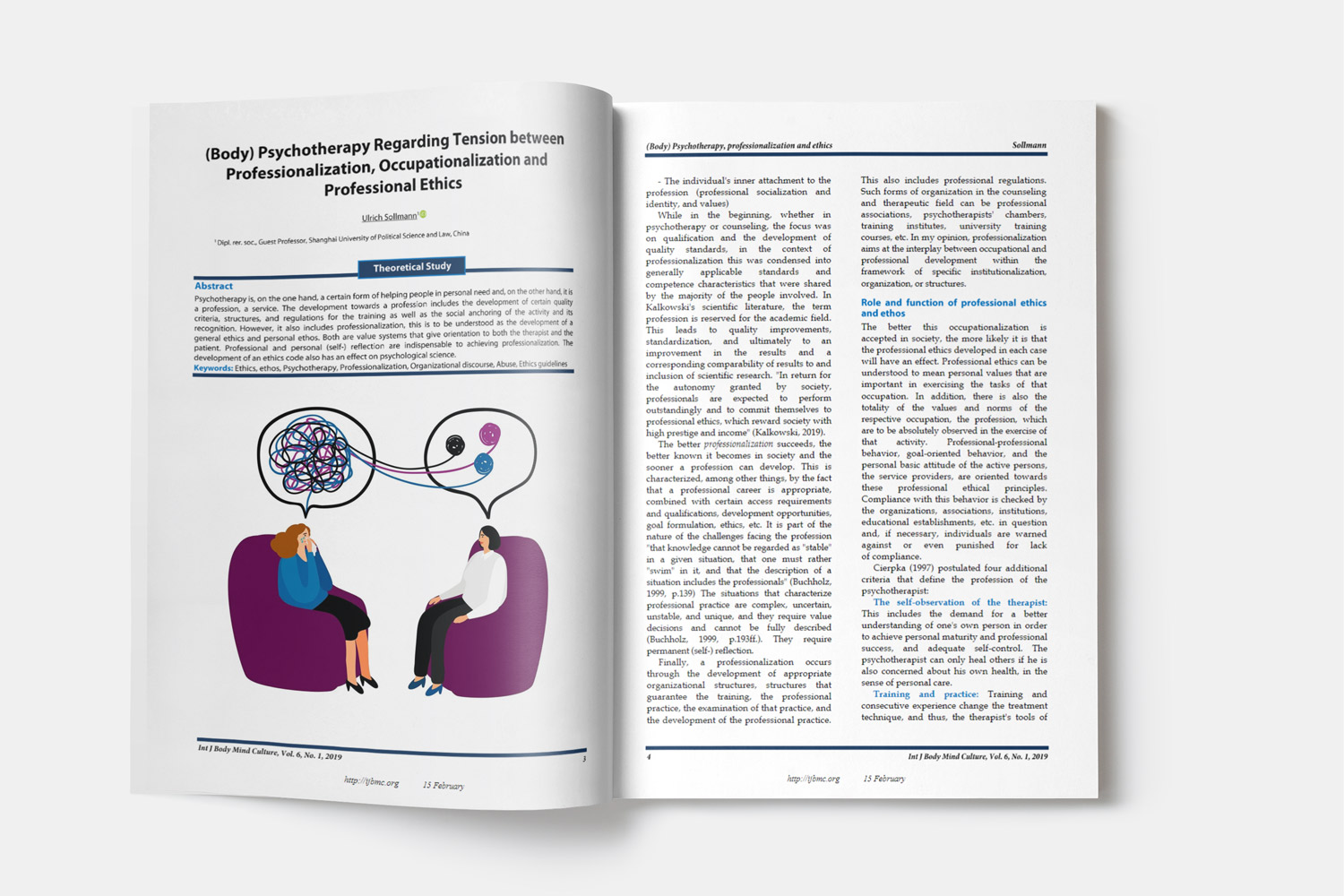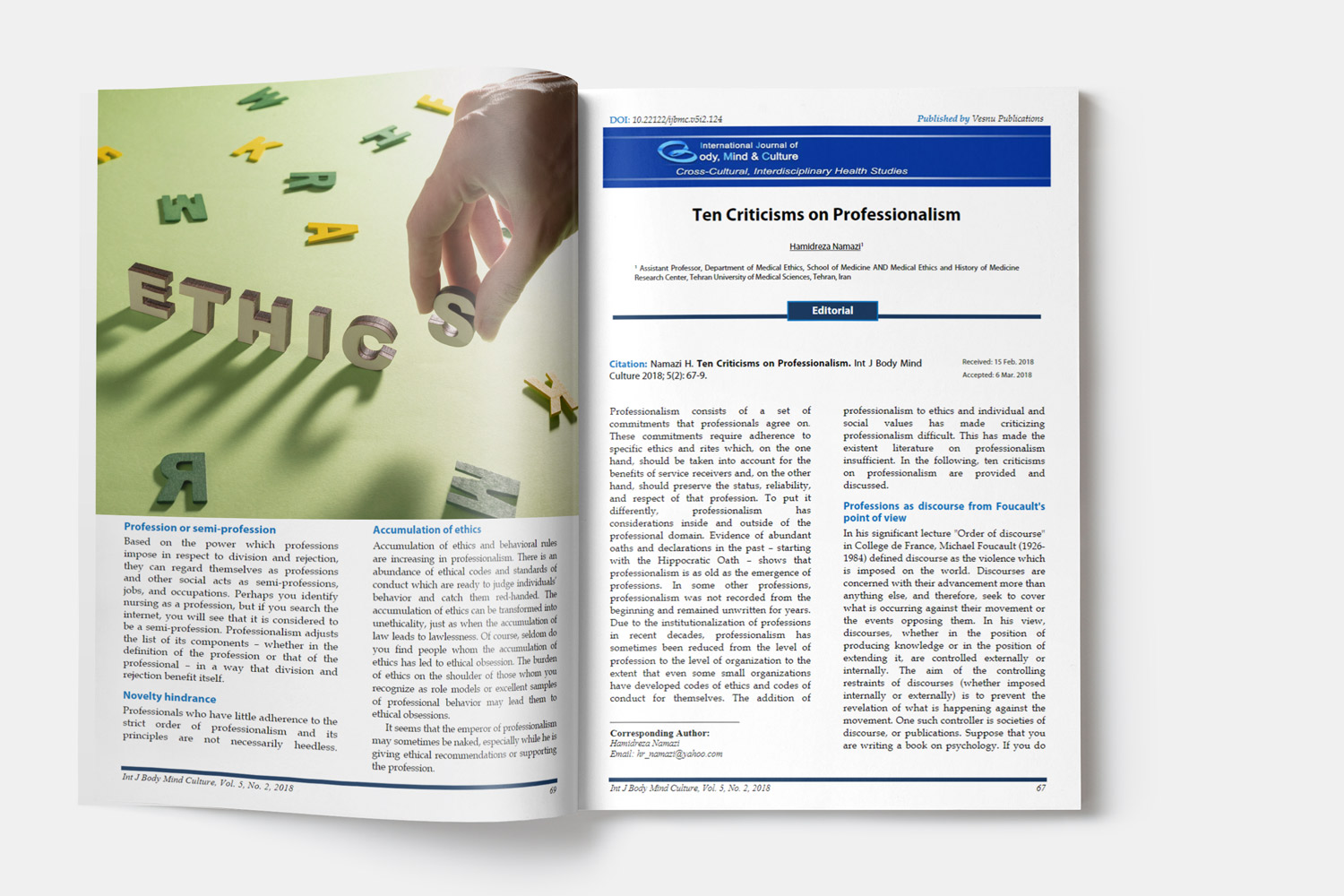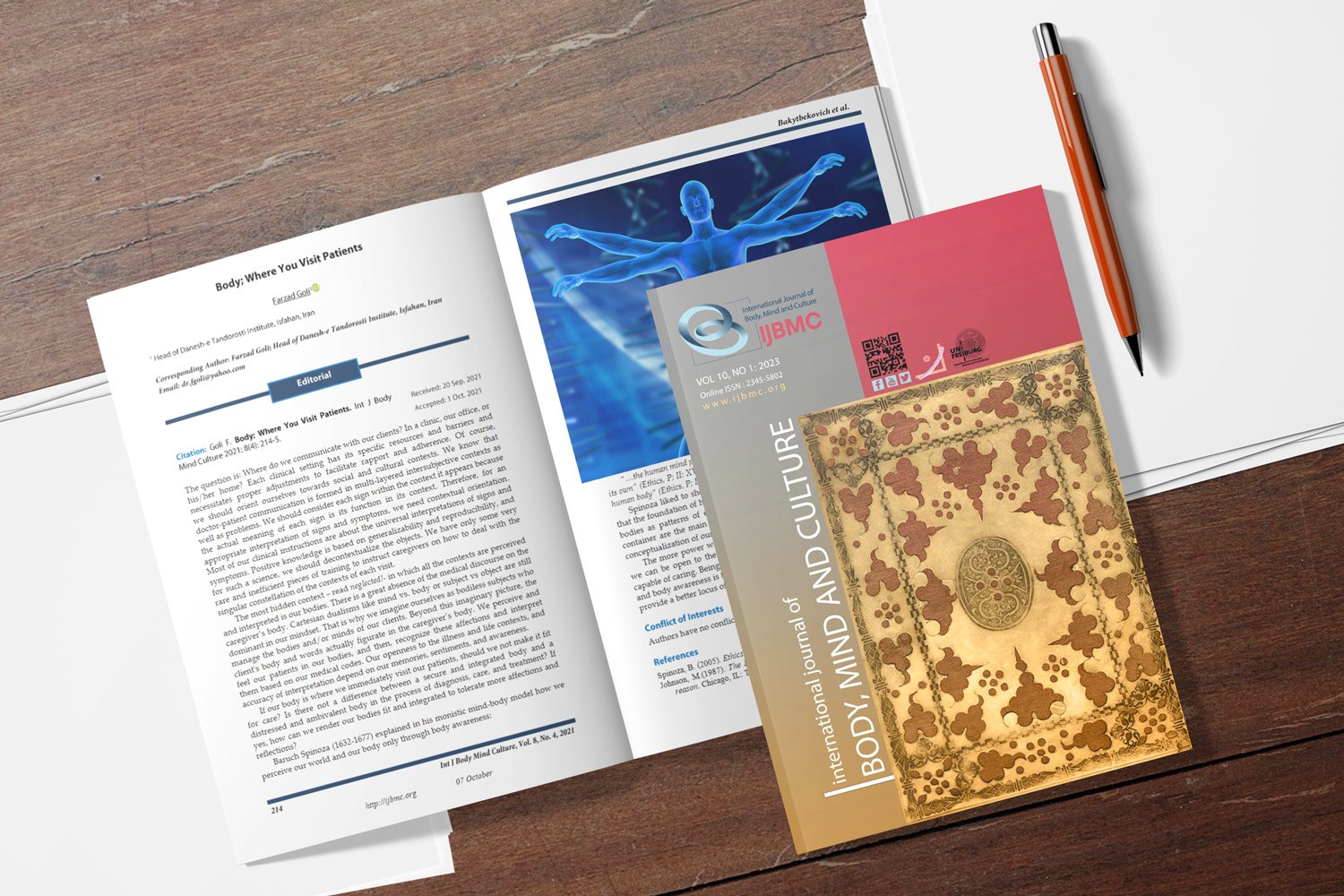Psychological Profile in a General Population in Central Part of Iran
Downloads
Background: The description of demographic features and associated risk factors provides a perspective for the development of health and prevention policies for psychological screening or referrals. Thus, updated data on epidemiologic profile of depression and anxiety in the society are necessary. This study aims to describe the psychological profile of a general population in central Iran.
Methods: This community-based, cross-sectional survey was performed as part of the SEPAHAN project (Study on the Epidemiology of Psychological Alimentary Health and Nutrition). The participants were
working in 50 different centers across Isfahan Province, Iran. The data on 4628 adults who had completed
demographic questionnaires and psychological questionnaires for depression and anxiety, coping styles, and stressful life events were included in the analysis. The data collection tools were the Demographic information questionnaire, Hospital Anxiety and Depression Scale (HADS), Coping Strategies Scale (Cope), and Stressful Life Event (SLE) questionnaire.
Results: The frequency and intensity of all considered stressors were found to be significantly associated with both depression and anxiety. Adaptive coping strategies were found to function as protective factors against both depression and anxiety. However, avoidance, as a maladaptive coping strategy, was found to be a risk factor.
Conclusion: The present survey reveals that the prevalence of depression and anxiety was 28% and 14%, respectively. Scholastic education plays a protective role against both depression and anxiety. All coping strategies, except avoidance, function to protect against depression and anxiety.
Downloads
Adibi, P., Hasanzadeh Keshteli, A., Esmaillzadeh, A., Afshar, H., Roohafza, H., Bagherian-Sararoudi, R. et al. (2012). The study on the epidemiologyof psychological, alimentary health and nutrition (SEPAHAN): Overview of methodology. J Res Med Sci, 17(Spec 2), S291-S297.
Ahmadvand, A., Sepehrmanesh, Z., Ghoreishi, F. S., & Afshinmajd, S. (2012). Prevalence of psychiatric disorders in the general population of Kashan, Iran. Arch.Iran Med, 15(4), 205-209. doi:006 [pii];012154/AIM.006 [doi]. Retrieved from PM:22424036
Al-Gelban, K. S., Al-Amri, H. S., & Mostafa, O. A. (2009). Prevalence of Depression, Anxiety and Stress as Measured by the Depression, Anxiety, and Stress Scale (DASS-42) among Secondary School Girls in Abha, Saudi Arabia. Sultan.Qaboos Univ Med J, 9(2), 140-147. Retrieved from PM:21509290
Alexander, B., David, E., & Grills, N. (2013). High prevalence of anxiety disorders among adolescent Tibetan refugees. Asian J Psychiatr., 6(3), 218-221. doi:S1876-2018(12)00237-7 [pii];10.1016/j.ajp.2012.12.006 [doi]. Retrieved from PM:23642979
Alvi, T., Assad, F., Ramzan, M., & Khan, F. A. (2010). Depression, anxiety and their associated factors among medical students. J Coll.Physicians.Surg Pak., 20(2), 122-126. doi:040579197 [pii];02.2010/JCPSP.122126 [doi]. Retrieved from PM:20378041
Attari, A., Naghdi, F., Farzaneh, H., Ris-Manchian, A., & Jaberi, P. (1998). Epidemiological study of the prevalence of depression in people over 20 years in Esfahan. J Res Med Sci, 1(2), 41-44.
Baxter, A. J., Scott, K. M., Vos, T., & Whiteford, H. A. (2013). Global prevalence of anxiety disorders: a systematic review and meta-regression. Psychol.Med, 43(5), 897-910. doi:S003329171200147X [pii];10.1017/S003329171200147X [doi]. Retrieved from PM:22781489
Chang, H. Y., Shin, Y. J., Batty, G. D., Son, D. K., Yun, Y. D., Jee, S. H. et al. (2013). Measuring depression in South Korea: validity and reliability of a brief questionnaire in the Korean Cancer Prevention Study. J Affect.Disord., 150(3), 760-765. doi:S0165-0327(13)00220-6 [pii];10.1016/j.jad.2013.02.035 [doi]. Retrieved from PM:23541487
Chong, S. A., Vaingankar, J., Abdin, E., & Subramaniam, M. (2012). The prevalence and impact of major depressive disorder among Chinese, Malays and Indians in an Asian multi-racial population. J Affect.Disord., 138(1-2), 128-136. doi:S0165-0327(11)00755-5 [pii];10.1016/j.jad.2011.11.038 [doi]. Retrieved from PM:22209269
Chou, K. L., & Cheung, K. C. (2013). Major depressive disorder in vulnerable groups of older adults, their course and treatment, and psychiatric comorbidity. Depress.Anxiety., 30(6), 528-537. doi:10.1002/da.22073 [doi]. Retrieved from PM:23423971
Farhoodian, A., Sharifi, V., Amini, H., Basirnia, A., Mansouri, N., Amin-Esmaeeli, M., et al. (2007). Prevalence of psychiatric disorders in Iran: A systematic review. Iran J Psychiatry, 2 (4), 137-150.
Ferrari, A. J., Somerville, A. J., Baxter, A. J., Norman, R., Patten, S. B., Vos, T. et al. (2013). Global variation in the prevalence and incidence of major depressive disorder: a systematic review of the epidemiological literature. Psychol.Med, 43(3), 471-481. doi:S0033291712001511 [pii];10.1017/S0033291712001511 [doi]. Retrieved from PM:22831756
Ghassemi, G. R, Asadollahi GA, Ahmadzadeh GH, Najmi B, Palahang H (2000). Prevalence of mental disorders in Isfahan city, 1996. J Res Med Sci, 4(4), 190-194.
Gourounti, K., Anagnostopoulos, F., & Lykeridou, K. (2013). Coping strategies as psychological risk factor for antenatal anxiety, worries, and depression among Greek women. Arch.Womens.Ment.Health, 16(5), 353-361. doi:10.1007/s00737-013-0338-y [doi]. Retrieved from PM:23558945
Jarczok, M. N., Jarczok, M., Mauss, D., Koenig, J., Li, J., Herr, R. M. et al. (2013). Autonomic nervous system activity and workplace stressors--a systematic review. Neurosci Biobehav.Rev., 37(8), 1810-1823. doi:S0149-7634(13)00175-9 [pii];10.1016/j.neubiorev.2013.07.004 [doi]. Retrieved from PM:23891906
Kathol, R. G., McAlpine, D., Kishi, Y., Spies, R., Meller, W., Bernhardt, T. et al. (2005). General medical and pharmacy claims expenditures in users of behavioral health services. J Gen.Intern.Med, 20 (2), 160-167. doi:JGI40099 [pii];10.1111/j.1525-1497.2005.40099.x [doi]. Retrieved from PM:15836550
Kaviani, H, Seifourian, H., Sharifi, V., Ebrahimkhani, N. (2009). Reliability and validity of Anxiety and Depression Hospital Scales (HADS): Iranian patients with anxiety and depression disorders. Tehran Univ Med J, 67(5), 379-385. Retrieved from http://tumj.tums.ac.ir/browse.php?a_code=A-10-25-453&slc_lang=en&sid=1
Keeler, A. R., Siegel, J. T., & Alvaro, E. M. (2014). Depression and help seeking among Mexican-Americans: the mediating role of familism. J Immigr.Minor.Health, 16(6), 1225-1231. doi:10.1007/s10903-013-9824-6 [doi]. Retrieved from PM:23568364
Kessler, R. C., & Bromet, E. J. (2013). The epidemiology of depression across cultures. Annu.Rev.Public Health, 34, 119-138. doi:10.1146/annurev-publhealth-031912-114409 [doi]. Retrieved from PM:23514317
Knowles, S. R., Cook, S. I., & Tribbick, D. (2013). Relationship between health status, illness perceptions, coping strategies and psychological morbidity: a preliminary study with IBD stoma patients. J Crohns.Colitis., 7(10), e471-e478. doi:S1873-9946(13)00105-0 [pii];10.1016/j.crohns.2013.02.022 [doi]. Retrieved from PM:23541738
Lasebikan, V. O., Ejidokun, A., Coker, O. A. (2012). Prevalence of mental disorders and profile of disablement among primary health care service users in Lagos Island. Epidemiol Res Int, 2012, 1-6. doi:10.1155/2012/357348.
Mohammadi, M. R., Davidian, H., Noorbala, A. A., Malekafzali, H., Naghavi, H. R., Pouretemad, H. R. et al. (2005). An epidemiological survey of psychiatric disorders in Iran. Clin.Pract.Epidemiol.Ment.Health, 1, 16. doi:1745-0179-1-16 [pii];10.1186/1745-0179-1-16 [doi]. Retrieved from PM:16185355
Mohammadi, M. R,. Rahgozar, M., Bagheri Yazdi, S. A.,Mesgarpour, B., Torabi, A.A.,Nasiri, H.(2004).Prevalence of psychiatric disorders in Isfahan Province in 2001. J Behav Sci Res, 1(1),1-7.
Muhammad Gadit, A. A., & Mugford, G. (2007). Prevalence of depression among households in three capital cities of Pakistan: need to revise the mental health policy. PLoS.One., 2(2), e209. doi:10.1371/journal.pone.0000209 [doi]. Retrieved from PM:17299589
Noorbala, A. (2011). Psychosocial Health and Strategies for improvement. Iran J Psychiatry Clin Psychol, 17(2), 151-156.
Noorbala, A. A., Bagheri Yazdi, S. A., Yasamy, M. T., & Mohammad, K. (2004). Mental health survey of the adult population in Iran. Br.J Psychiatry, 184, 70-73. Retrieved from PM:14702230
Noorbala, A. A., Bagheri Yazdi, S. A., & Hafezi, M. (2012). Trends in change of mental health status in the population of Tehran between 1998 and 2007. Arch.Iran Med, 15(4), 201-204. doi:005 [pii];012154/AIM.005 [doi]. Retrieved from PM:22424035
Pietrzak, R. H., Kinley, J., Afifi, T. O., Enns, M. W., Fawcett, J., & Sareen, J. (2013). Subsyndromal depression in the United States: prevalence, course, and risk for incident psychiatric outcomes. Psychol Med, 43(7), 1401-1414. doi:S0033291712002309 [pii];10.1017/S0033291712002309 [doi]. Retrieved from PM:23111093
Radford, M. H. (2004). Transcultural issues in mood and anxiety disorders: a focus on Japan. CNS.Spectr., 9(6 Suppl 4), 6-13. Retrieved from PM:15181380
Sadeghirad, B., Haghdoost, A. A., Amin-Esmaeili, M., Ananloo, E. S., Ghaeli, P., Rahimi-Movaghar, A. et al. (2010). Epidemiology of major depressive disorder in iran: a systematic review and meta-analysis. Int J Prev Med, 1(2), 81-91. Retrieved from PM:21566767
Smit, F., Cuijpers, P., Oostenbrink, J., Batelaan, N., de, G. R., & Beekman, A. (2006). Costs of nine common mental disorders: implications for curative and preventive psychiatry. J Ment.Health Policy Econ., 9(4), 193-200. Retrieved from PM:17200596
Ventevogel, P. (2005). The psychiatric epidemiological studies in Afghanistan: A critical review of literature and future directions. J Pak Psychiatr Soc, 2(1), 9-12.
Williams, D. R., Gonzalez, H. M., Neighbors, H., Nesse, R., Abelson, J. M., Sweetman, J. et al. (2007). Prevalence and distribution of major depressive disorder in African Americans, Caribbean blacks, and non-Hispanic whites: results from the National Survey of American Life. Arch.Gen.Psychiatry, 64(3), 305-315. doi:64/3/305 [pii];10.1001/archpsyc.64.3.305 [doi]. Retrieved from PM:17339519
World Health Organization. Mental health management. Available from: URL: http://www.who.int/mental_health/management/depression/definition/en. Accessed Aguste20, 2016.
Copyright (c) 2016 International Journal of Body, Mind and Culture

This work is licensed under a Creative Commons Attribution-NonCommercial 4.0 International License.






